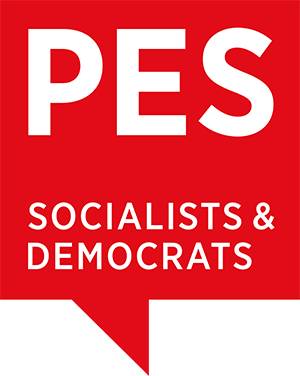Information in English
Information about The Norwegian Labour Party
The Parliamentary Group of the Norwegian Labour Party:
+47 23 31 33 20
The Norwegian Labour Party Headquarters:
+47 24 14 40 00
Media contact for the Norwegian Labour Party:
+47 48 11 11 11
The Norwegian Labour Party
The Norwegian Labour Party has a vision of a just world without poverty, in peace and ecological balance, where people are free and equal and have influence on the conditions affecting their lives.
The Norwegian Labour Party is a social democratic party committed to liberty, democracy and social justice.It is a reformist party that believes in partnership and cooperation on national as well as international level.
By acting together rather than just as individuals, we can make a better society for all.
The Norwegian Labour Party is the largest political party in Norway, with 27,4 percent of the votes in the general election in 2017 and 49 out of 169 members of parliament.
Brief history
The Norwegian Labour Party was founded in 1887. In gained its first parliamentary seats in 1903 and has been Norway`s largest political party since 1927.
The party experienced a split in 1921 caused by a decision made two years earlier to join the Communist International. In 1923 the party left the Communist International and in 1927 Labour was once again united.
The first labour government was formed in 1928, lasting only two weeks. During the early 1930s Labour abandoned its revolutionary profile and set for a reformist course. Labour then returned to government in 1935 and remained in power until 1965 (except for the exile period between 1940-45).
Other periods in government have been 1971-72, 1973-81, 1986-89, 1990-97, 2000-2001, 2005-2013 and 2021-.
Through 44 years in government the Labour Party has played a decisive role in shaping the Norwegian welfare state. Although recognising that there is still a lot to be done, the party is proud to be associated with the achievements being made by Labour governments during several decades: A society with a relatively small gap between rich and poor, a comprehensive welfare system and low unemployment compared to most other countries.
Organisational structure
A system whereby local trade unions could be affiliated to the party was abolished from 1997, and today The Labour Party has the last decade had approximately 50 000 individual members. The party is organised in counties, municipalities and local associations.
The Party Congress, being held every two years, is the supreme body of the Labour Party. This Congress elects the party leadership, consisting of a leader, two deputy leaders and a secretary general.
These four together with 17 other elected members (also elected by the Congress) and the leader of AUF, constitutes the Executive Board.
The highest body between the Congresses is the National Delegate´s Meeting, which consists of the Executive Board and two representatives from each of the counties.
The party's leadership
Leader: Jonas Gahr Støre
Secretary General: Kjersti Stenseng
Deputy Leaders: Tonje Brenna and Jan Christian Vestre
Relations with the trade union movement
The Labour Party and the trade union movement have common historical roots. There has always been a close cooperation between these two branches of the labour movement.
However, the organisational and decision-making structures of the party and the Confederation of Trade Unions (LO) are separate and fully independent.
Cooperation between the two is formally organised through a joint committee made up by the leadership of the party and LO, which meets on a weekly basis.
International affiliations

The Norwegian Labour Party is a full member of the Party of European Socialists (PES). Read PES Declaration of Principles.
We are also a full member of the Joint Committee of the Nordic Labour Movement (SAMAK).
The Norwegian Labour Party is an active participant in the Progressive Alliance, and an observer of the Socialist International (SI).
Party leaders since 1945
- 1945-65: Einar Gerhardsen
- 1965-75: Trygve Bratteli
- 1975-81: Reiulf Steen
- 1981-92: Gro Harlem Brundtland
- 1992-2002: Thorbjørn Jagland
- 2002-2014: Jens Stoltenberg
- 2014- Jonas Gahr Støre
Labour Prime Ministers since 1945
- 1945-51: Einar Gerhardsen
- 1951-55: Oscar Torp
- 1955-65: Einar Gerhardsen
- 1971-72: Trygve Bratteli
- 1973-76: Trygve Bratteli
- 1976-81: Odvar Nordli
- 1981: Gro Harlem Brundtland
- 1986-89: Gro Harlem Brundtland
- 1990-96: Gro Harlem Brundtland
- 1996-97: Thorbjørn Jagland
- 2000-01: Jens Stoltenberg
- 2005-2013: Jens Stoltenberg
- 2021-: Jonas Gahr Støre